
Jean-Pierre Aumont was a French actor as well as holder of the Légion d'Honneur and the Croix de Guerre for his World War II military service.

María África Gracia Vidal, known professionally as Maria Montez, was a Dominican actress who gained fame and popularity in the 1940s starring in a series of filmed-in-Technicolor costume adventure films. Her screen image was that of a seductress, dressed in fanciful costumes and sparkling jewels. She became so identified with these adventure epics that she became known as The Queen of Technicolor. Over her career, Montez appeared in 26 films, 21 of which were made in North America, with the last five being made in Europe.
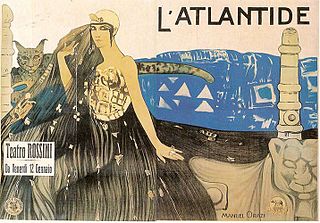
Atlantida is a fantasy novel by French writer Pierre Benoit, published in February 1919. It was translated into English in 1920 as Atlantida. L'Atlantide was Benoit's second novel, following Koenigsmark, and it won the Grand Prize of the French Academy. The English translation of Atlantida was first published in the United States as a serial in Adventure magazine.

Jon Hall was an American film actor known for playing a variety of adventurous roles, as in 1937's The Hurricane, and later when contracted to Universal Pictures, including Invisible Agent and The Invisible Man's Revenge and six films he made with Maria Montez. He was also known to 1950s fans as the creator and star of the Ramar of the Jungle television series which ran from 1952 to 1954. Hall directed and starred in two 1960s sci-fi films in his later years, The Beach Girls and the Monster (1965) and The Navy vs. the Night Monsters (1966).
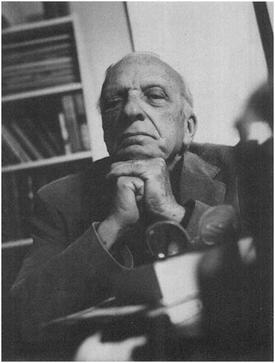
Philip Yordan was an American screenwriter, film producer, novelist and playwright. He was a three-time Academy Award nominee, winning Best Story for Broken Lance (1951).
King Brothers Productions was an American film production company, active from 1941 to the late 1960s. It was founded by the Kozinsky brothers, Frank, Maurice, and Herman, who later changed their surname to "King". They had notable collaborations with such filmmakers as Philip Yordan and William Castle and are particularly remembered today for employing a number of blacklisted writers during the Red Scare of the late 1940s and 1950s. Some of their films include Dillinger (1945), Suspense (1946), Gun Crazy (1949), Carnival Story (1954), The Brave One, Gorgo (1961), Captain Sindbad (1963), and Heaven With a Gun (1968).

Sleep, My Love is a 1948 American noir film directed by Douglas Sirk. It features Claudette Colbert, Robert Cummings and Don Ameche.

The Exile is a 1947 American historical adventure romantic film directed by Max Ophüls, and produced, written by, and starring Douglas Fairbanks Jr. French actress Rita Corday played the romantic interest. According to Robert Osborne, the primary host of Turner Classic Movies, María Montez had a stipulation in her contract that she had to have top billing in any film in which she appeared, so her name comes first in the opening credits, despite her secondary role. The film is based on the 1926 novel His Majesty, the King: A Romantic Love Chase of the Seventeenth Century by Cosmo Hamilton.
Seton Ingersoll Miller was an American screenwriter and producer. During his career, he worked with film directors such as Howard Hawks and Michael Curtiz. Miller received two Oscar nominations and won once for Best Screenplay for the 1941 fantasy romantic comedy film, Here Comes Mr. Jordan, along with Sidney Buchman.

The Thief of Venice or Il Ladro di Venezia is a 1950 Italian film directed by John Brahm. The US title was "The Thief of Venice".
Seymour Nebenzal was an American-born Jewish-German film producer. He produced 46 films between 1927 and 1961.
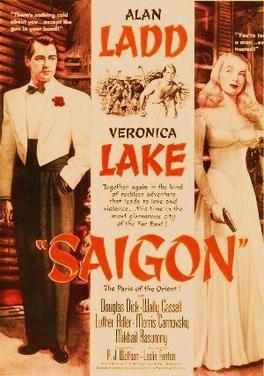
Saigon is a 1948 American crime film directed by Leslie Fenton starring Alan Ladd and Veronica Lake. In their fourth and final film together. It was distributed by Paramount Pictures and was one of the last films Veronica Lake made under her contract with the studio. Ladd and Lake made four films together; This Gun for Hire and The Glass Key, both in 1942, The Blue Dahlia in 1946 and Saigon. While the earlier films all proved to be big box office successes, Saigon did not do as well financially. Ladd continued to remain one of Paramount's top male stars, while Lake's career was in decline. By the end of 1948 her contract with Paramount had expired and the studio chose not to renew it.

Valentino is a 1951 American biographical film directed by Lewis Allen and starring Eleanor Parker.

Lydia Bailey is a 1952 American historical adventure film directed by Jean Negulesco and starring Dale Robertson, Anne Francis and Charles Korvin. It was made by 20th Century Fox and based on the 1947 novel of the same name by Kenneth Roberts.

Song of Scheherazade is a 1947 American musical film directed by Walter Reisch. It tells the story of an imaginary episode in the life of the Russian composer Nikolai Rimsky-Korsakov, in 1865, when he was a young naval officer on shore leave in Morocco. It also features Yvonne De Carlo as a Spanish dancer named Cara de Talavera, Eve Arden as her mother, and Brian Donlevy as the ship's captain. Charles Kullman, a tenor with the Metropolitan Opera, plays the ship's doctor, Klin, who sings two of Rimsky-Korsakov's melodies.
Nero-Film AG was a German film production company founded in 1925 and based in Berlin during the Weimar era.
Portrait of an Assassin is a 1949 French drama thriller film directed by Bernard-Roland and starring Maria Montez, Erich von Stroheim, Arletty and Pierre Brasseur.
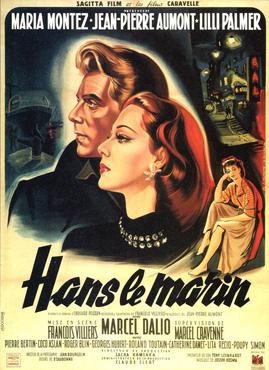
Wicked City is a 1949 French-American drama film directed by François Villiers and starring the husband-and-wife team of Jean-Pierre Aumont and Maria Montez. It was Montez's first film in Europe.
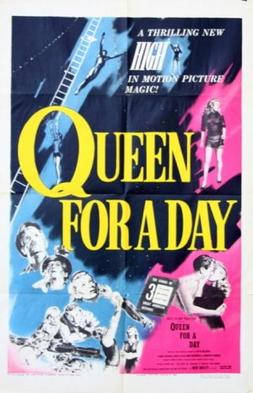
Queen for a Day is a 1951 American comedy film directed by Arthur Lubin and written by Seton I. Miller. The film stars Jack Bailey, Jim Morgan, Fort Pearson, Melanie York, Cynthia Corley, Kay Wiley and Helen Mowery. The film was released on July 7, 1951 by United Artists.
Earl Felton (1909–1972) was an American screenwriter.













